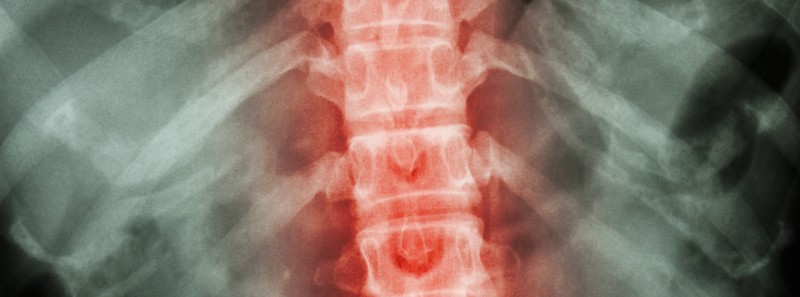Osteopenia, Bone Loss & the Spine
Category: Spine | Author: Stefano Sinicropi

Osteopenia is a condition in which a person’s bone density levels are lower than normal, increasing their risk of spinal fractures and other injuries. This article will discuss the causes and risk factors of osteopenia as they relate to conditions and injuries of the spine.
What is Osteopenia?
Osteopenia is a precursor to osteoporosis, in which a patient exhibits early signs of bone loss and a decreased bone mineral density. A person with osteopenia will not necessarily develop osteoporosis, but it is an potential early warning sign of the condition.
People are more likely to develop osteopenia as they age. When the body ages, it begins to lose bone density. Nothing can completely halt this process. However, there are certain risk factors that can increase a person’s likelihood of developing osteopenia or osteoarthritis, including:
- Smoking & Excessive alcohol consumption
- Lack of calcium in the diet
- Not getting enough exercise
Osteopenia & the Spine
Osteopenia can make a person more vulnerable to certain spinal conditions and injuries. Bone loss can greatly increase a patient’s risk of spinal vertebrae fractures.
Typically, most patients don’t even realize they have osteopenia until they sustain an injury (i.e. spinal fracture) that may indicate the condition. Bone density scans are recommended for patients between the ages of 65 and 70. If you have a family history of osteoporosis, you should get a density scan at age 60 or earlier.
Diagnosis & Treatment
Diagnosing osteopenia typically requires a DXA scan, which measures the mineral levels in your bones. High bone density equals strong bones, while a low DXA result can indicate weak bones and conditions such as osteopenia and osteoporosis.
Osteopenia does not require immediate treatment, as it’s simply a precursor to osteoporosis and may not worsen. If you have been diagnosed, it is a good idea to monitor your condition over time to see if it gets worse. You can also make certain dietary and lifestyle changes (quit smoking, eat more calcium, etc.) to prevent increased loss of bone density.